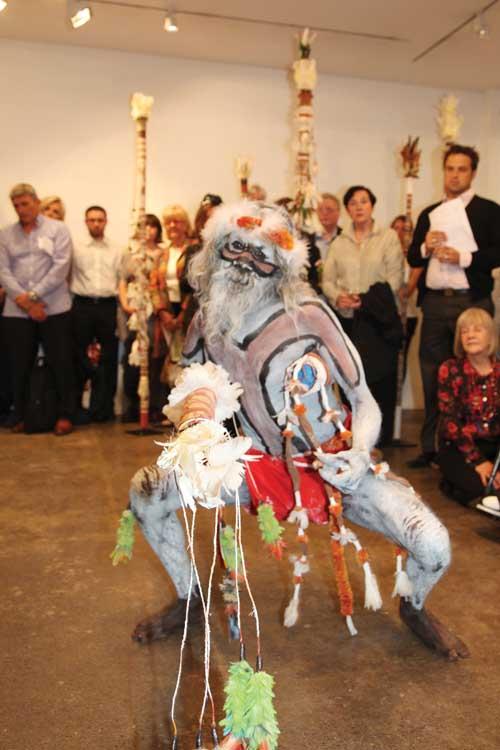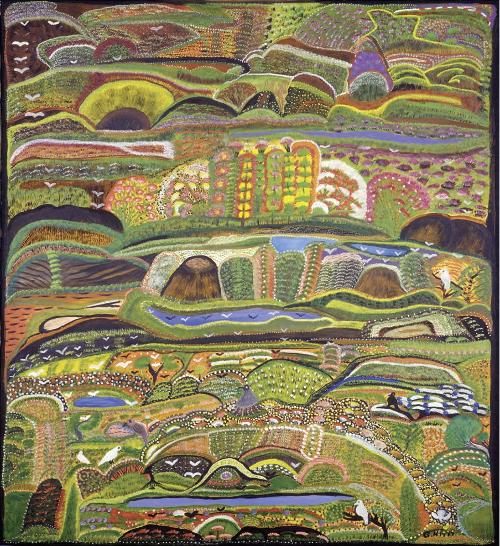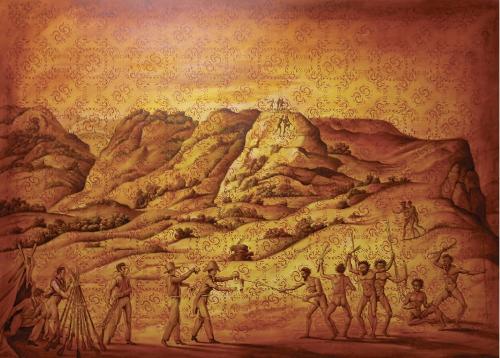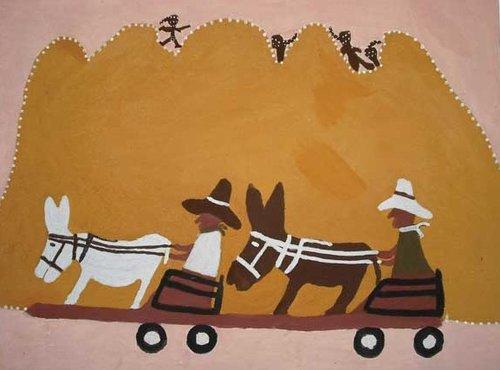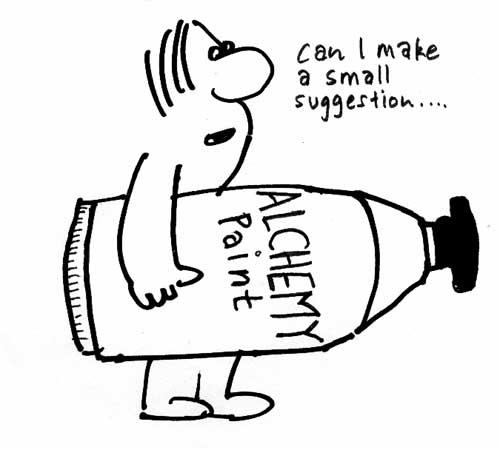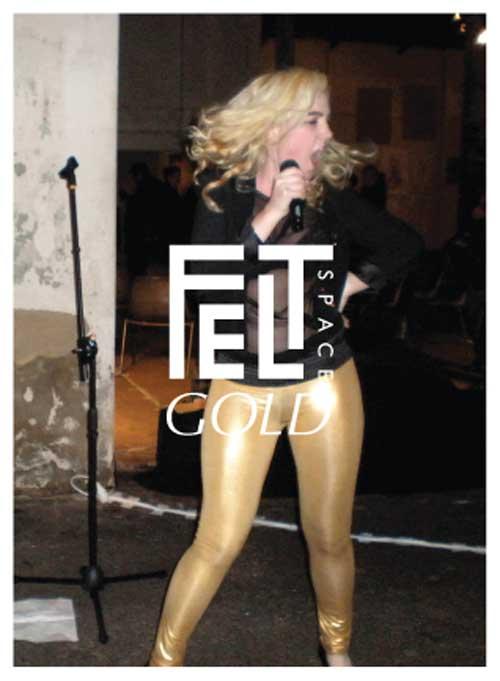New Exhibitions Projects Initiatives
Warburton Art in China
The latest international blockbuster at the Shanghai Art Museum Our Land - Our Body: Tu Di – Shen Ti is the largest exhibition of Australian Aboriginal art to visit China and will continue to tour major cities in 2011. The exhibition features 65 works in painting, video, photography, sound and projection from the Warburton Ranges, one of the remotest places on earth – about halfway between Alice Springs and Kalgoorlie in Western Australia. Gary Proctor is the exhibition organiser and manager of the Warburton Arts Project. www.tjulyuru.com
Tu Di - Shen Ti is travelling to six venues - Shanghai Art Museum; Nanjing Museum; Today Art Museum, Beijing; the Xi'An Art Museum; Wuhan Art Museum; Zhejiang Art Museum; Dongguan Guancheng Art Museum, Guangzhou; and more in the pipeline. The profile of Australian Indigenous art and culture in China is minimal, and the interest of the museums in this exhibition is high because of the sense of breaking new ground. The show was one of the key closing events for the Year of Australian Culture in China Imagine Australia over April - June 2011.
Gary Proctor has worked for the last two decades with the Ngaanyatjarra people, a desert community that has now grown to about 3,000 people. Most of his time has been spent developing artists’ skills and working with elders to gather the ancient stories and songs, which have now become messages to the outside world. None of the works in Tu Di - Shen Ti are for sale, and they will remain the property of the Ngaanyatjarra people. The China project has engaged Gary Proctor with a Chinese team, and his wife Zhou Ling Ling as project manager, for two years, and their efforts have paid off – 85,000 visitors saw the show in Shanghai in March 2011.
Trying to capture a sense of the desert, the vast skies and landscape of the Warburton Ranges area was achieved by placing photographs and audio-visual components, like the sound of the wind, alongside the paintings. There were also recordings of community members and elders speaking and singing. Gary Proctor has had to negotiate secret-sacred issues in which the titles of some works are so sacred that it is forbidden to speak them aloud. He has sought to convey how the work deals with the interconnectedness of all in the spiritual cosmos of the artists.
On its return to Australia in 2013 the exhibition will open at the Art Gallery of Western Australia.
Report complied with acknowledgements to Din Heagney’s The Foreign Art Office, his art writing project funded by the Australia Council, based on travels to China and USA in 2011. See http://www.shanghaiexpat.com/article/aboriginal-australia-arrives-modern-china-13438.html

